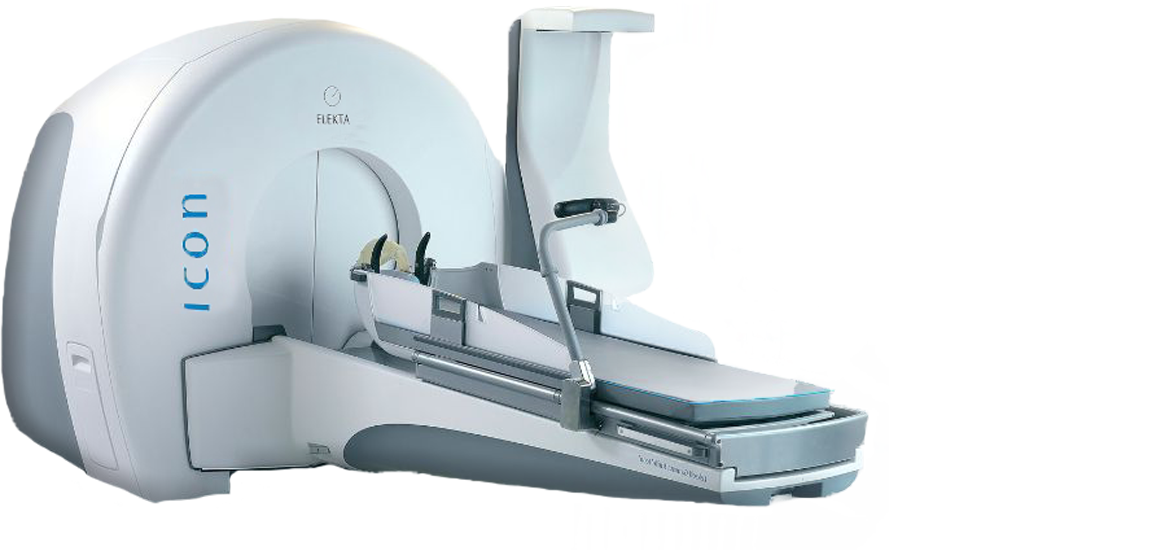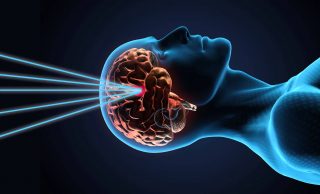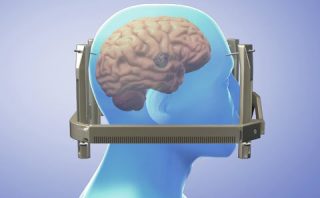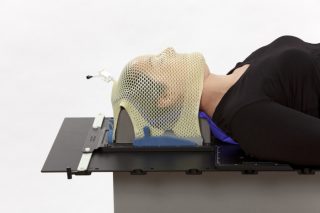
Radiosurgery
No knife or actual Surgery is utilized in this treatment.
What is Gamma Knife radiosurgery?
No scalpel or incision is involved.It is not a knife at all. 201 precisely focused beams of radiation (gamma-radiation) is used to treat malignant and non-malignant tumors as well as functional disorders in the brain.
The precisely focused beams allow for treatment and targeting of structures inside the brain with submilimeter accuracy. No harm is done to the surrounding healthy tissues as a sharp cut-off of radiation is achieved at the margin of the target. Gamma Knife Radiosurgery contains the word “Knife” and “Surgery” in view of its capacity to create this surgical “cut-like” effect.
It can be used for the treatment of cancers, tumors, arterio-venous malformations and also for functional brain conditions like trigeminal neuralgia.
It is ideal for the treatment of small deep seated lesions that are difficult to access with conventional surgery.
This radiation causes DNA strand breaks, chromosonal abberations and vascular damage to the target volumes leading to tumor cell death. In trigeminal neuralgia the radiation induces focal axonal degeneration. In AVM’s the radiation induces progressive narrowing of the blood vessels.
Gamma Knife treatment generally involves these steps:
- Head Frame placement
- A box shaped frame is attached to the head with pins
- With the Icon no pins are used. A thermo-plastic mask is used instead to immobilize the patient during treatment.
- Imaging
The patient is then sent for a CT and MRI scan to image lesion to be treated. - Planning
The patient then returns to his room while the dose is created on the workstation. - Treatment
The patient is then positioned and the treatment is commenced
The Team
- Neurosurgeon
- Frame application
- Treatment planning
- Radiation Oncologist
- Neuro-radiologist
- Physicist
Treatment Indications:
- Brain Cancer or Brain Metastases.
- Benign Brain Tumors.
- Meningiomas
- Accoustic Neuromas
- Arterio Venous Malformations.
- Trigeminal Neuralgia
Gamma Knife radiosurgery has shown some promise for the treatment of tumor and rigidity of parkinson’s diseases, epilepsy and chronic pain. There may be other reasons for your physician to recommend Gamma Knife radiosurgery.
Before the Procedure
- Your physician will explain the procedure to you and offer you the opportunity to ask any questions that you might have about the procedure.
- You will be asked to sign a consent form that gives your permission to do the procedure. Read the form carefully and ask questions if something is not clear.
- In addition to a complete medical history, your physician may perform a complete physical examination to ensure you are in good health before undergoing the procedure. You may undergo blood tests or other diagnostic tests.
- Notify your physician if you are sensitive to or are allergic to any medications, latex, tape, contrast dyes, iodine, shellfish, or anesthetic agents (local and general).
- Notify your physician of all medications (prescription and over-the-counter) and supplements that you are taking.
- Notify your physician if you have a history of bleeding disorders or if you are taking any anticoagulant (blood-thinning) medications, aspirin, or other medications that affect blood clotting. It may be necessary for you to stop these medications prior to the procedure.
- Notify your physician if you have any type of implant(s), such as a pacemaker and/or implantable defibrillator, artificial heart valve, surgical clips for a brain aneurysm, implanted medications pump, chemotherapy port, nerve stimulators, eye or ear implants, stents, coils, or filters.
- If you are pregnant or suspect that you are pregnant, you should notify your physician. Women of child-bearing age may be asked to give a urine specimen for pregnancy testing prior to the procedure.
- You will be asked to fast for eight hours before the procedure, generally after midnight.
- You may be given a special shampoo to wash your hair with the night before or the morning before the procedure.
- You may receive a sedative prior to the procedure to help you relax.
- Based upon your medical condition, your physician may request other specific preparation.
During the Procedure
A Gamma Knife procedure may be performed on an outpatient basis or as part of your stay in a hospital. Procedures may vary depending on your condition and your physician’s practices.
Generally, a Gamma Knife procedure follows this process:
- You will be asked to remove any clothing, jewelry, hairpins, dentures, or other objects that may interfere with the procedure, and will be given a gown to wear.
- An intravenous (IV) line may be started in the hand or arm in order to give medications and/or fluids during the procedure.
- The skin on your head will be cleansed at the locations where the pins for the head frame will be placed.
- A local anesthetic will be injected at the head frame pin insertion sites. Once the anesthetic has taken effect, the head frame will be attached to your head with pins that are inserted into your skull.
- You may feel some pressure during the placement of the head frame, but this sensation should go away in a few minutes.
- After the head frame is attached, you will undergo brain imaging so that the location of the brain tumor or lesion can be precisely identified for planning the treatment. The brain imaging procedure may be a computed tomography (CT) scan, a magnetic resonance imaging (MRI) scan, or a cerebral angiogram.
- After the brain imaging has been completed, you will be allowed to rest and relax while the treatment team completes your treatment plan. The images from your imaging procedure will be used by a computer in planning your specialized treatment.
- When your treatment plan is ready, you will be taken into the room where the Gamma Knife equipment is located. You will lie down on a sliding table. A special helmet, called a collimator helmet, will be fitted over the head frame. The collimator helmet has 201 holes in it, which allow radiation beams to pass through it into your brain in a very precise pattern that is determined by a computer.
- Once the helmet is in place, the table will slide into the Gamma Knife unit. You may hear a clicking sound as the collimator helmet moves into place in the machine.
- The treatment team will go into another room when the treatment begins. You will have an intercom available to communicate with the treatment team. They will be able to hear you at all times. You will also be observed with a video monitor.
- The number of treatments will depend on your specific situation. The entire treatment session may last from two to four hours, but the length of the session will depend on the treatment plan designed for you.
- You will not feel or hear anything from the Gamma Knife unit during the treatment session.
- After the treatment session is over, the treatment table will slide out of the Gamma Knife machine. You will be allowed to get up at this time, unless you had an angiogram prior to the Gamma Knife procedure.
- The head frame will be removed. The pin insertion sites will be cleaned and a sterile dressing will be applied.
- Frameless treatment(Gamma Knife Icon) will involve the use of a thermo-plastic mask , no pin fixation (painless).
After the Procedure
After the procedure, you will be observed for a period of time. If your brain imaging prior to the Gamma Knife procedure was a cerebral angiogram, you will need to lie still with the affected leg straight for a few hours until the catheter insertion site in the groin is no longer bleeding.
Once you are able to take liquids by mouth, the IV line will be removed. You may take liquids and solid foods as tolerated.
You may feel some discomfort after the procedure, such as a headache or nausea. Let your nurse know if you are uncomfortable, so that you may be given medication and/or other treatment.
The Gamma Knife procedure is generally performed on an outpatient basis, so you most likely will be allowed to go home at the end of the day. You will need to have someone drive you home, however. If necessary, you may be admitted to the hospital for overnight observation.
Once you are home, you may resume your normal diet, medications, and activities, unless your physician instructs you differently. You may be instructed to avoid strenuous activity, such as exercise, for a period of time.
You will most likely be allowed to gently shampoo your hair the day after the procedure. You should not scrub the pin sites on your head, however, until they have completed healed, generally within a week or so.
Call your physician to report any of the following:
- severe headache that is not relieved by medication
- any weakness, numbness, or vision problems that are new, or have become worse than they were prior to the procedure
- continued bleeding or other drainage from the pin sites
- seizures
Your physician may give you additional or alternate instructions after the procedure, depending on your particular situation.
Brain Diseases
| – Arteriovenous Malformations – Acoustic Neuroma – Meningiomas – Pituitary Tumors and Craniopharyngiomas – Brain Metastases – Glial cell tumors |
– Other malignant brain tumors – Trigeminal Neuralgia – Parkinsonian tremor – Obsessive compulsive disorder – Malignant bone pain – Effectiveness on tractable pain in cancer spread to the bone |
| Readmore |



